Travels with Dick and Karen
Glacier Fall 2012
Part 2: Dinos
(Waterton to Edmonton) |
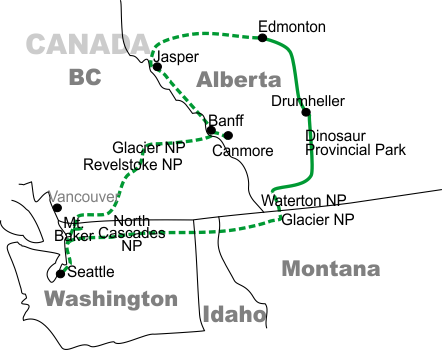 |
South central Alberta is flat. Very flat. Full of wheat and oil and gas wells. Along with flat, the road system is somewhat rectangular, and we were trying to strike out on a diagonal. So it was 100 miles (mostly) east, then 110 miles north, then 10 miles east, then 10 miles north, then 10 final miles east of... flat. |
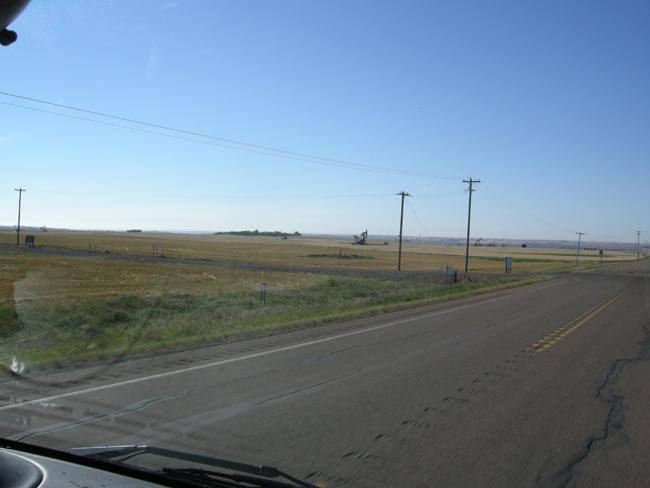 |
| Until, in the late afternoon, we suddenly came to a trench made by the Red Deer River. |
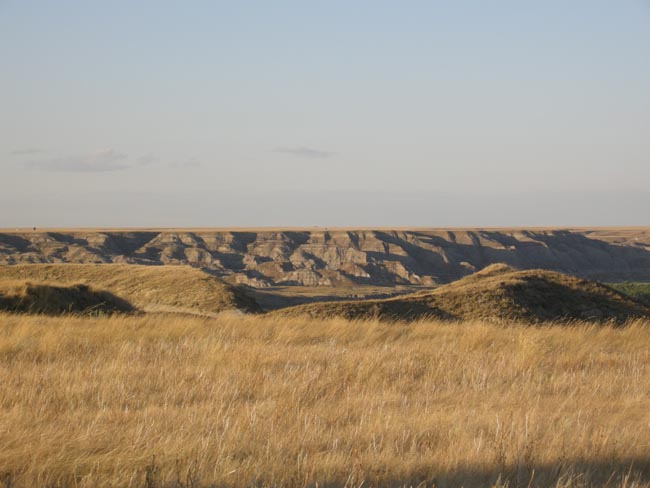 |
The trench is Alberta's Dinosaur Provincial Park, which includes a small museum, a working field station, a campground and a concession stand with food. The Park is one of the richest fossil sites in the world. Forty new species were discovered here, and over 500 specimens have been removed and displayed in museums around the world. It's still very much an active site of discovery and excavation. |
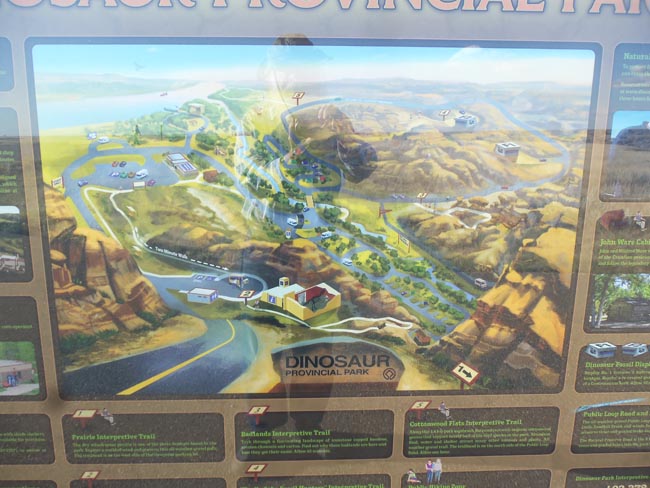 |
The late afternoon sun made the lighting dramatic as we dropped into the trench, descending to layers (and fossils) that were laid down about 76 million years ago. |
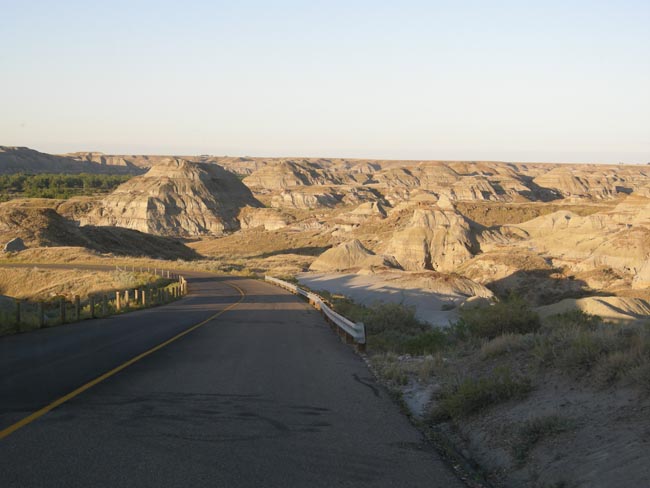 |
| |
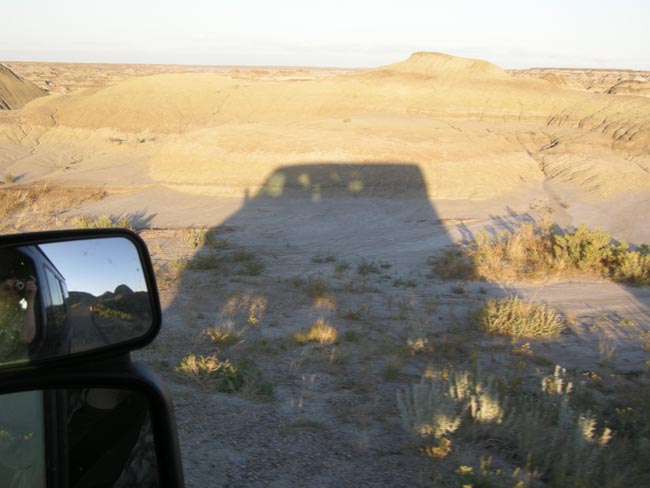 |
| Folks who have read through the John Day portion of our Eclipse 2012 trip will realize that our trips frequently seem to involve exploring layers of sediment. |
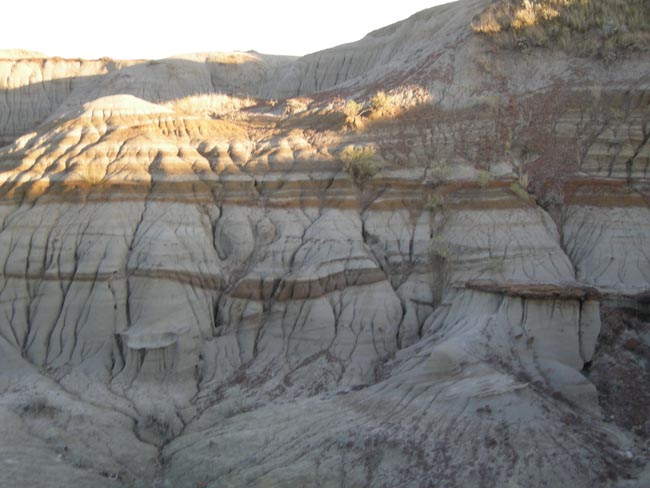 |
The Park has a 2-mile loop road that visits a number of exhibit areas and trail heads. There is also a 24-seat Guided Tour bus that takes an additional "not open to unescorted public" road to additional exhibits. It makes many trips per day during the summer, but the once-daily fall schedule was booked full. One enjoyable feature of the park is that the area enclosed by the loop road is free-access. You can clamber all over that area to your heart's content. You're not allowed to take fossils, but there's always the chance you'll find something newly exposed by the weathering action of wind and water. |
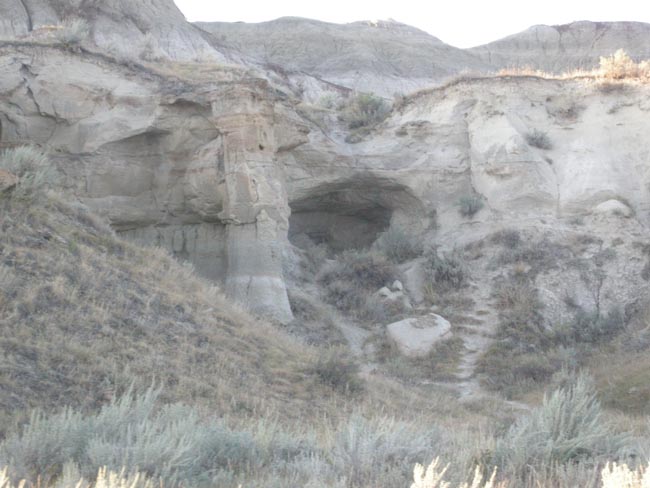 |
Along the loop road are two exhibit buildings. These are fossil sites that were left in place, surrounded by glass-walled buildings. The bones have been stabilized and stained to improve visibility, but were left as they were found. This one is a fairly complete (except skull) hadrosaur. (see next) |
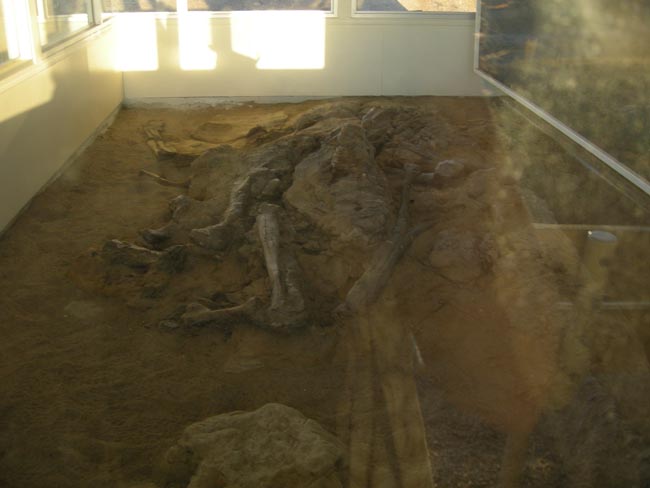 |
Each exhibit building had explanatory signs and diagrams. This is the above hadrosaur's, rearranged to fit this webpage format. |
 |
We were truly enjoying the last hour of sunlight |
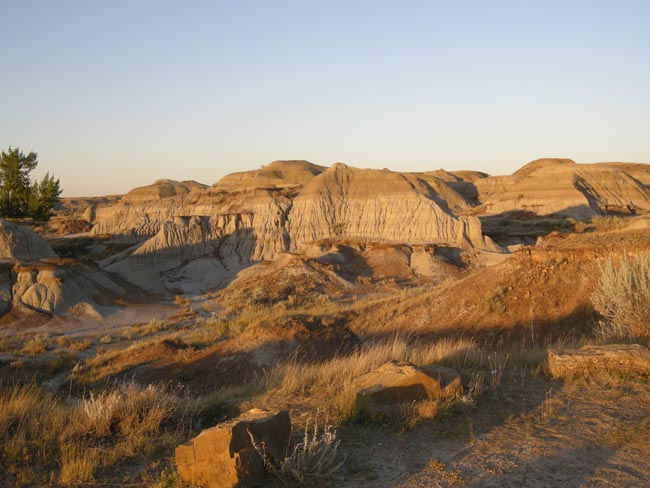 |
| The second exhibit was of a jumbled "bonebed" that had formed at the bend of a ancient river. Dinosaurs had been washed here when they died, and were dismembered by scavangers. Among this jumble are hadrosaurs, centrosaurs (a triceratops relative) and others. The tools and string-grid (used for recording where things were found) of the working paleontologist (and their hordes of grad students and eco-tour volunteers). |
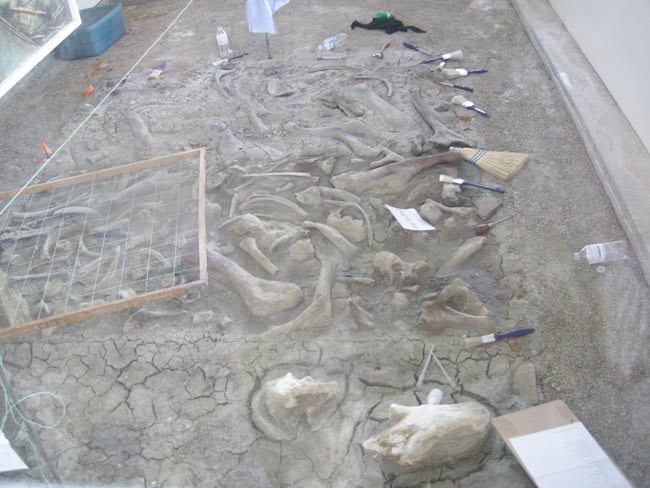 |
The exhibit's live attendant kept an eye (and ear) on us... |
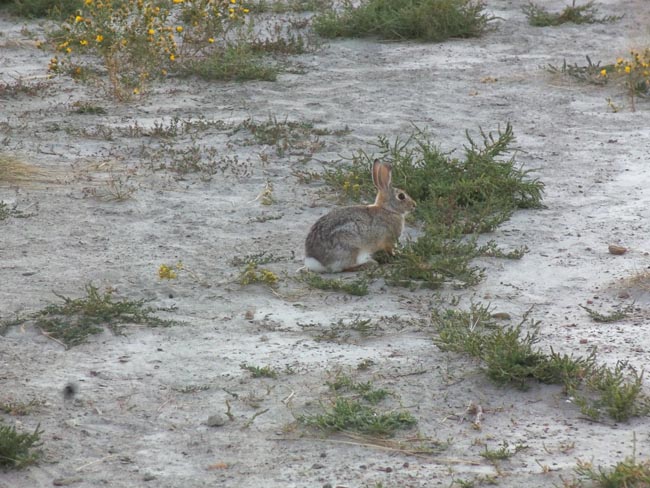 |
| Sunset eventually caught up with us, and we headed back to the campground. |
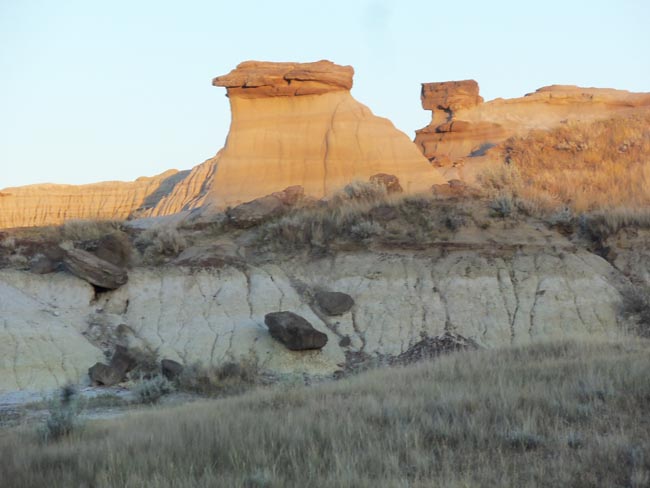 |
Magpies enjoying the puddles in the campground. Since we were after Labor Day, it wasn't very crowded. Don't try to camp here during the summer without reservations. We could hear coyotes howling during the night. |
 |
| The next day dawned overcast and threatening to rain. We were glad that we'd spent the previous late afternoon rapidly exploring the loop road and enjoying the lighting. Today we visited the visitor center's exhibits, and then hiked a number of the trails throughout the accessible portions of the park. |
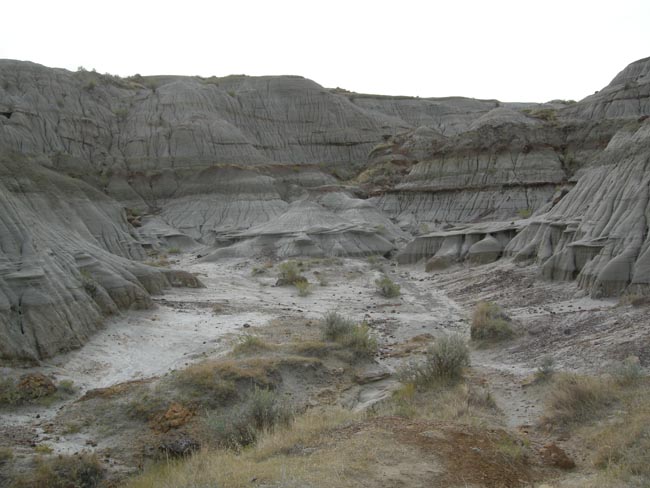 |
The hills are constantly eroding... each rainstorm washes gravel and bones out of the landscape. The actual layer containing fossils is about 1 million years thick... so the fossils are examples from 75 to 76 million years ago. |
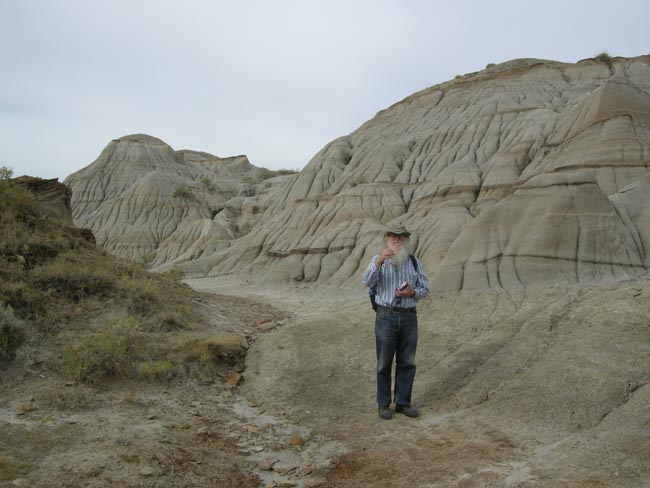 |
| The major trails have occasional signed exhibits explaining the geology, landforms, local fauna and flora, and the occasional "here we found". |
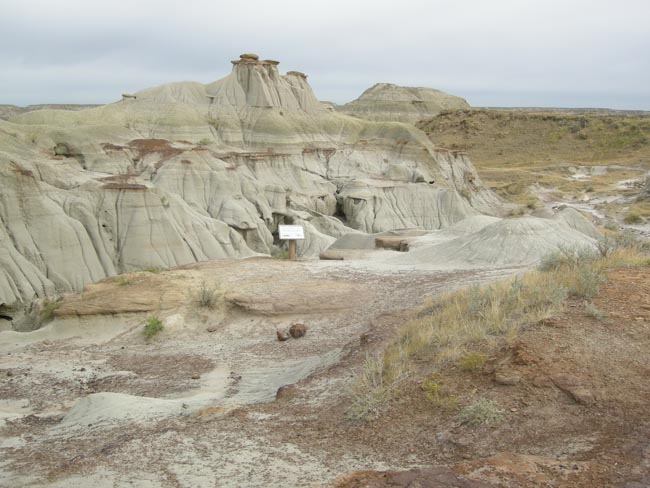 |
| Yes, it does look like The Badlands in South Dakota... hoodoos, painted layers and everything... every twist and turn of the trail revealed fantastic terrain and weather-carved shapes. |
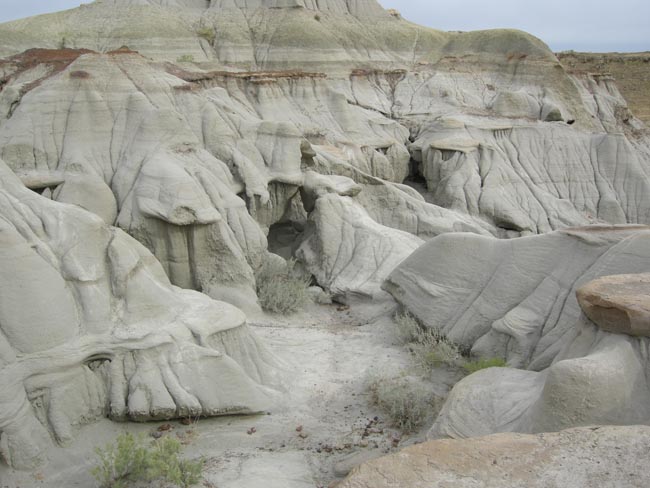 |
| Water is the scarce resource limiting vegetation. The trees by a creek are the campground. |
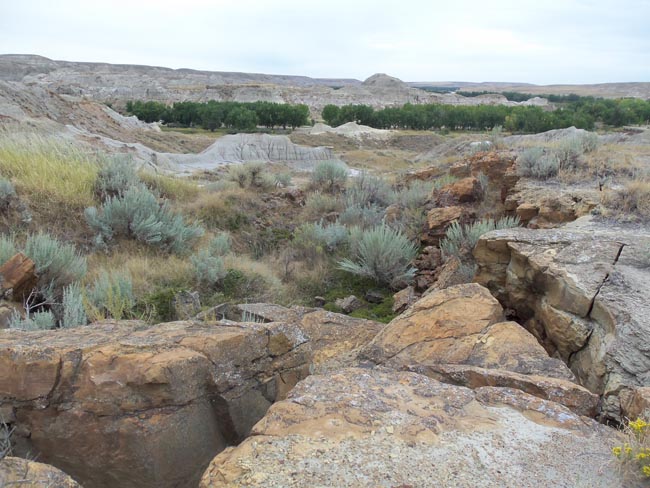 |
| One last hike and then we hit the road north towards Drumheller, being escorted along the way by pillars of rain. |
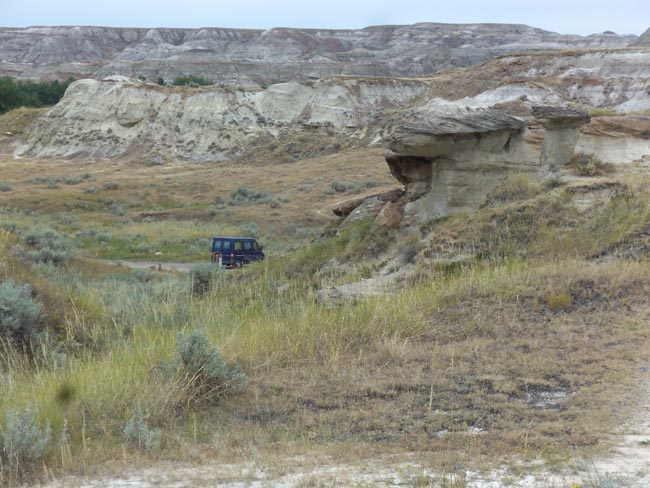 |
| Stopping along the way to tour the HooDoos between Lehigh and Cambria, once we rejoined the Red Deer River's trench. |
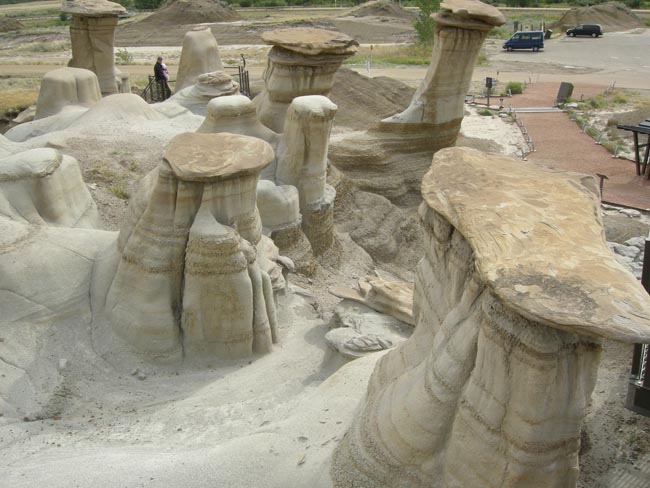 |
| |
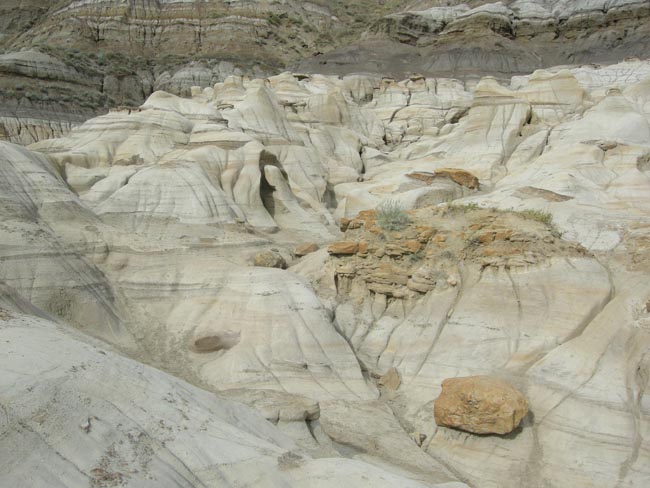 |
| To minimize human damage to the hoodoos, steel stairs and catwalks provided great access for looking, at a distance that kept them just of out arm's reach. In the areas without pillars, it was simply a gravel trail. |
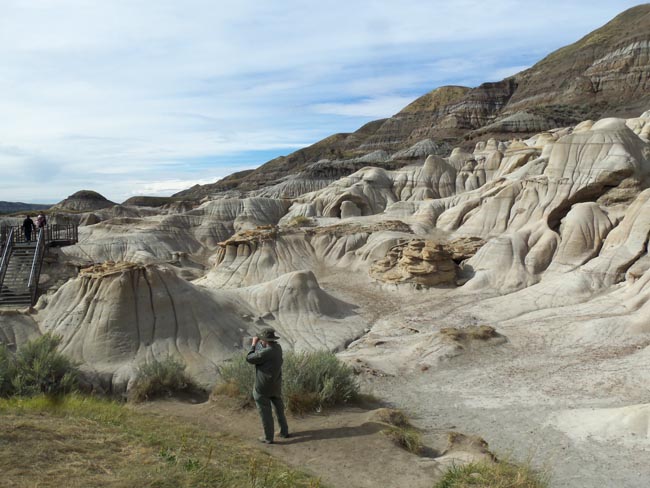 |
| Last look at hoo doos. (at least for today :-) |
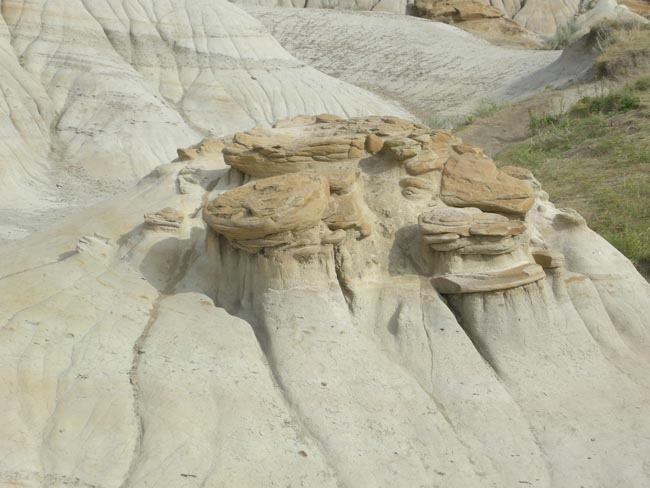 |
| The whole Red Deer River valley area has pockets of eroded badlands: here's one in the midst of the Horseshoe Plateau on a tributary. |
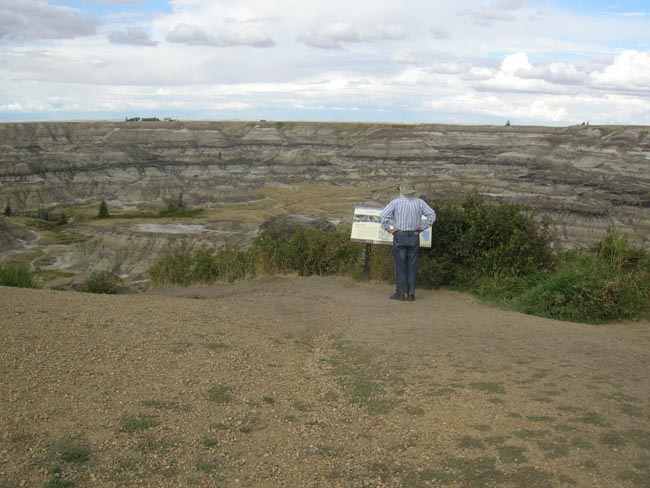 |
| ...it's a park with many hiking and biking trails. |
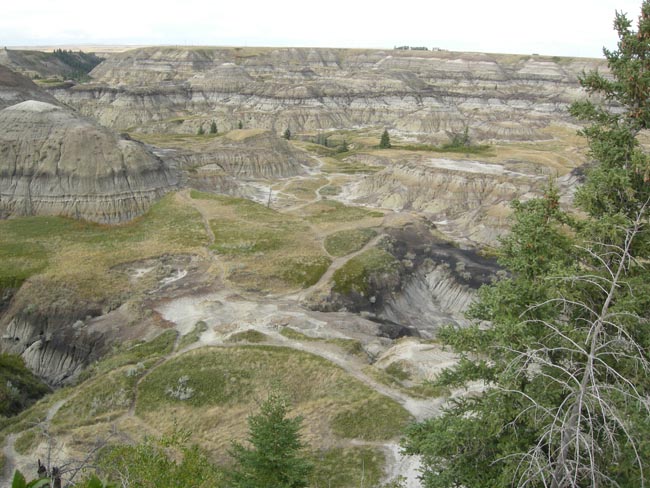 |
| On to (and through, since we were trying to find a campground) Drumheller |
 |
| Where the valley floor is, at times, wide enough to farm. Most of the agricultural activity is on the surrounding plateaus. |
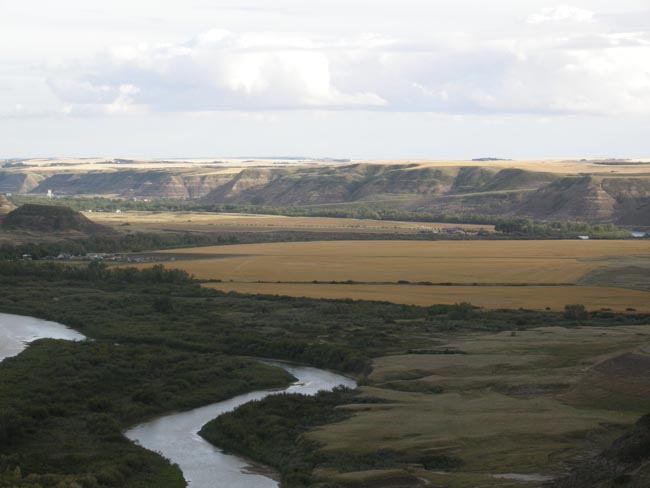 |
| Some of the Provincial Parks were tiny. The Berloit Ferry Rec Area is was a narrow stripe adjacent to the river about 15 miles NW of Drumheller. |
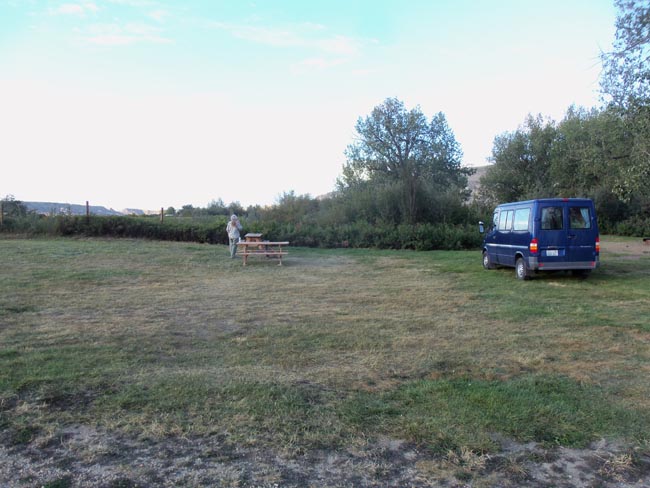 |
| 100 feet away was the ferry (which we took) |
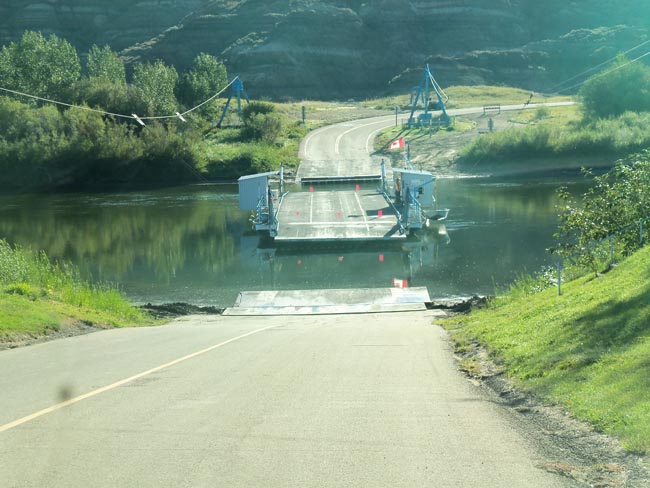 |
| On the way back down to Drumheller, we stopped at an overlook of the river valley... and found a handful of really cute ground squirrels... |
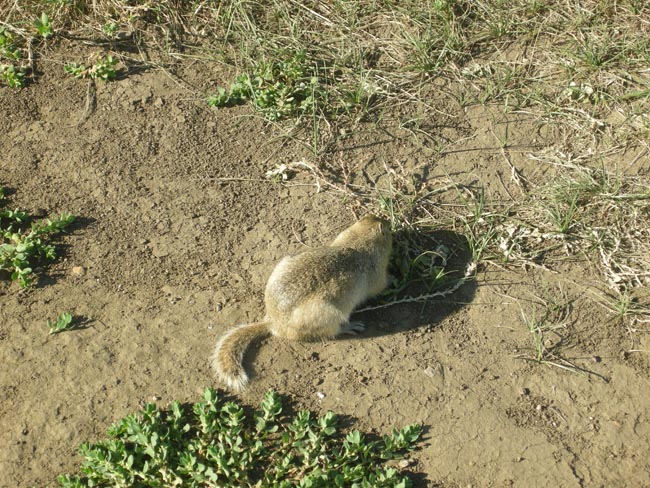 |
| ...also enjoying the overlook. |
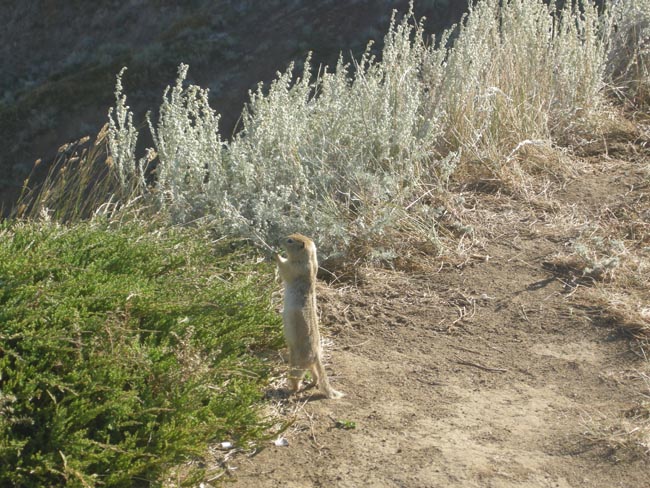 |
| ...while overhead there were Turkey vultures playing in a thermal -- shortly after this they all separately spiraled away. |
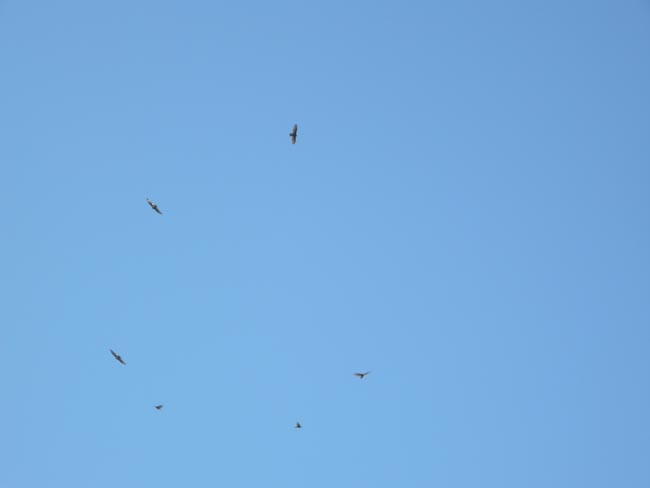 |
Drumheller is home to the Royal Tyrell Museum: the place where many of the fossils from Dinosaur Provincial Park and the other eroded areas ended up. |
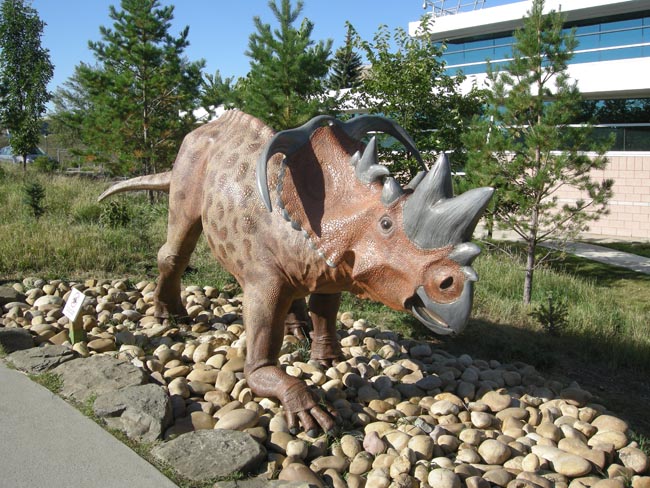 |
This is the best presentation of fossils that Karen has seen yet and she's seen many. The following will just give you a hint. First we get the fiberglass models.. |
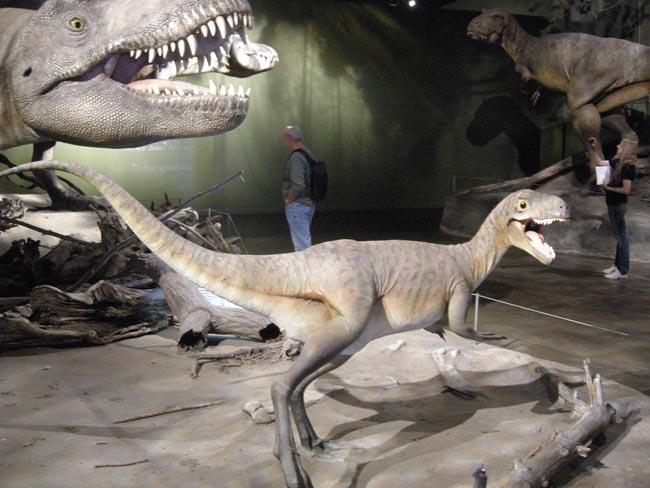 |
| ..and then we get the real, er, skinny... |
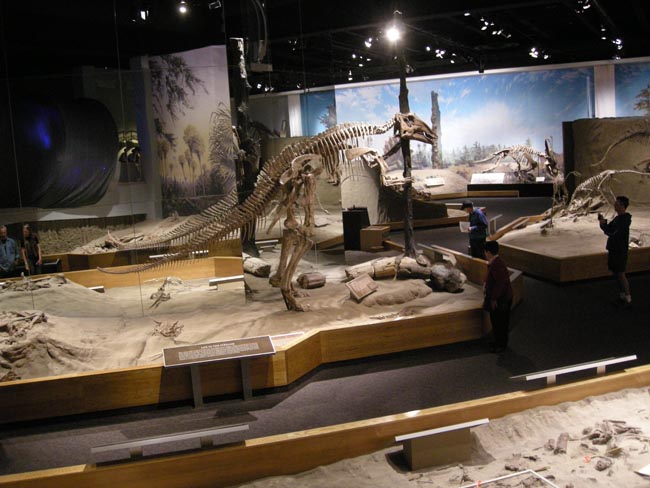 |
There was a large gallery set out as a classical fine art museum... except the "paintings" hanging on the wall were mounted fossils. Whereas most museums display accurate plaster casts of fossils, the Royal Tyrell displays the actual specimens whenever they can. There is also a large viewing window into the working labratory where the fossils are extracted from their surrounding rock and prepared for study and display. |
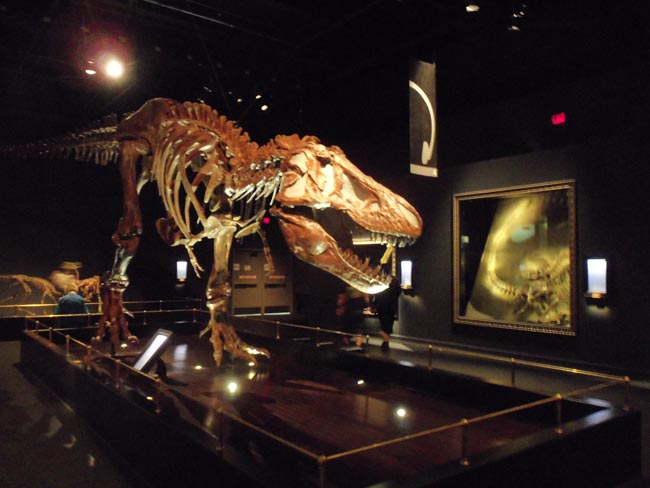 |
| It's now generally agreed that the major extinctions that brought about the end of the dinosaurs at the end of the Mesozoic were partly triggered by an asteroid crashing into the earth in the Gulf of Mexico. Its "signature" is an inch-thick layer of white clay containing a high concentration of iridium found all over the earth. The famed iridium line: |
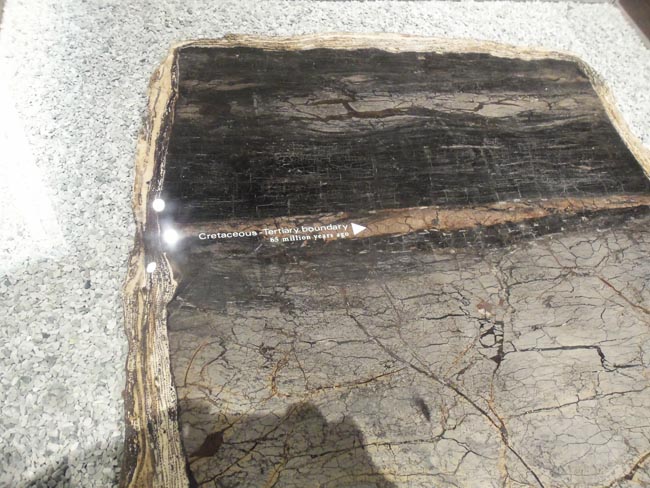 |
| The museum's exhibits spanned the range from the earliest ocean protoza as represented by the Burgess Shale fossils to the Age of the Mammals and us. |
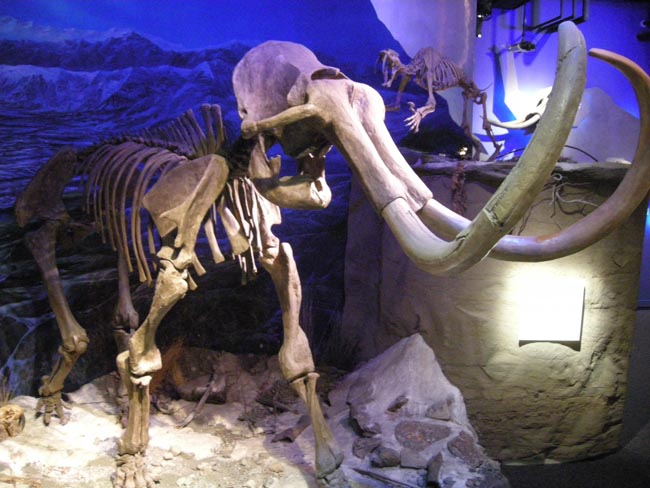 |
| This is an ammonite, similar to a current-day chambered Nautilus. From a couple of privately-owned quarries fragments of the iridescent thin fossilized shell are mined and sold as a gemstone called ammolite. Karen spent quite some time trying to find a piece in her budget. Oh well, Dichroic glass can emulate it. |
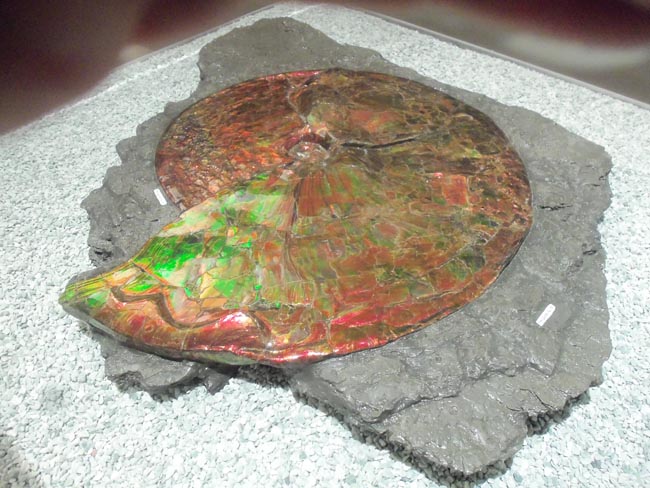 |
| |
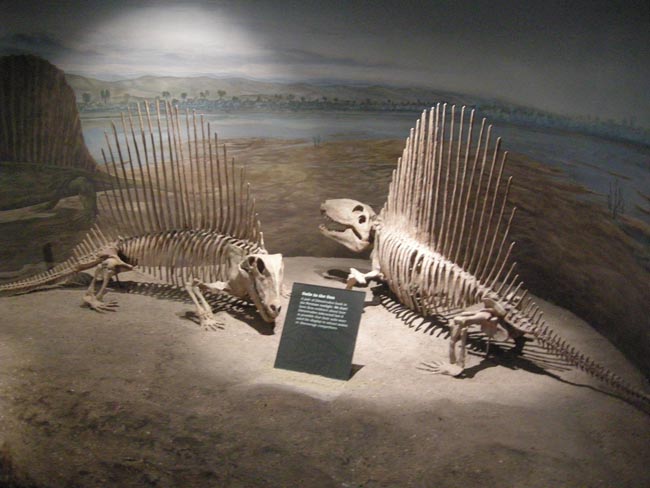 |
| Did we spend hours? |
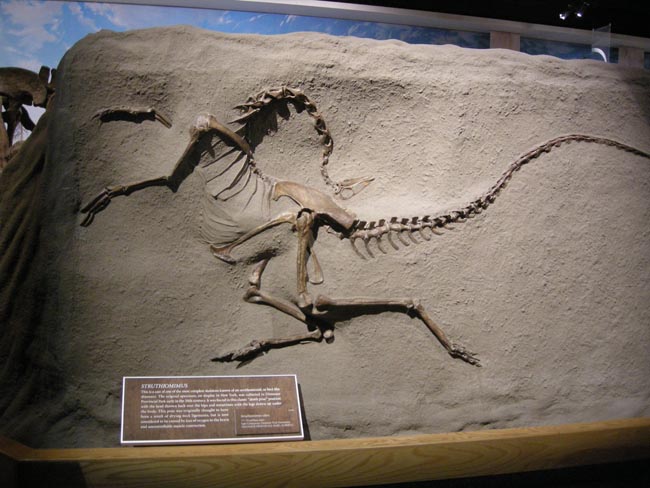 |
| |
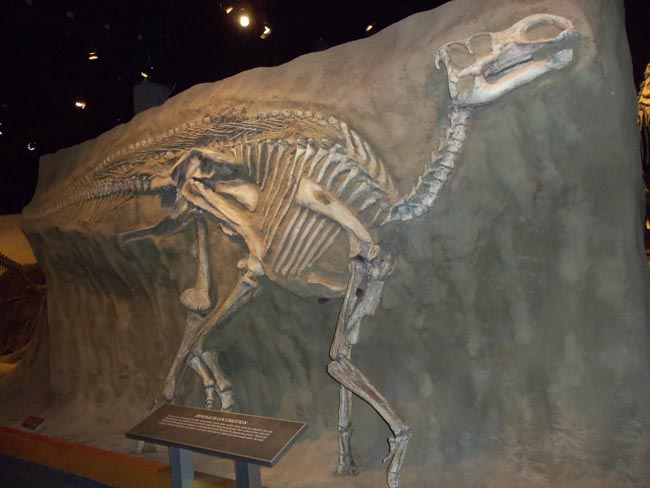 |
| ...oh, yes. |
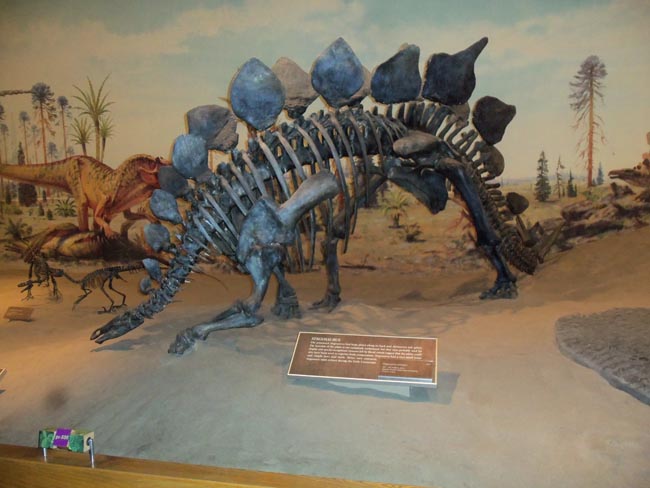 |
(luckily there was a cafeteria... we opened it and closed it)
(No, this wasn't on the menu) |
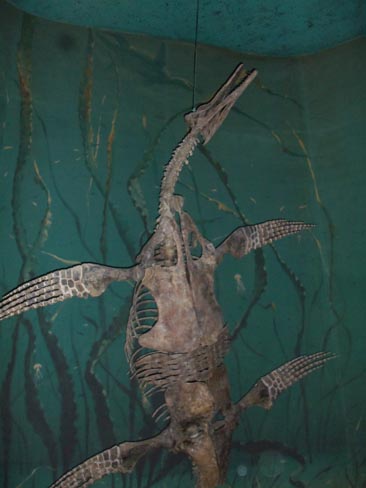 |
| They chased us out of the museum, so it was time to leave Drumheller. But first we went into town to try and find a decaf coffee shake (Karen's newest addiction). Bidding us Welcome was the largest dinosaur in the province. |
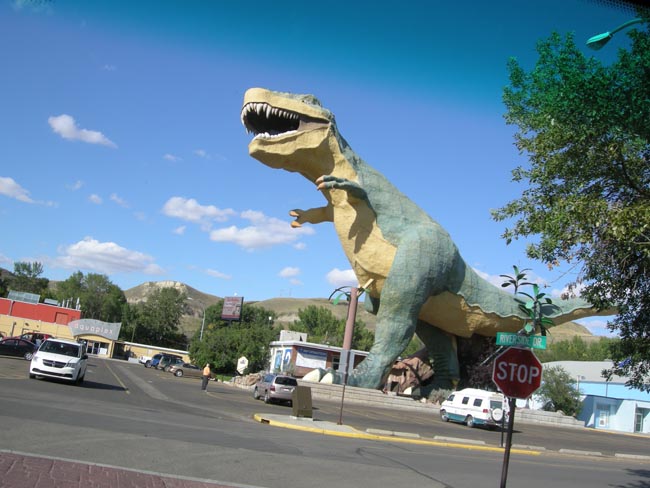 |
| So we were back onto the prairie until we got to the rolling hills around Edmonton |
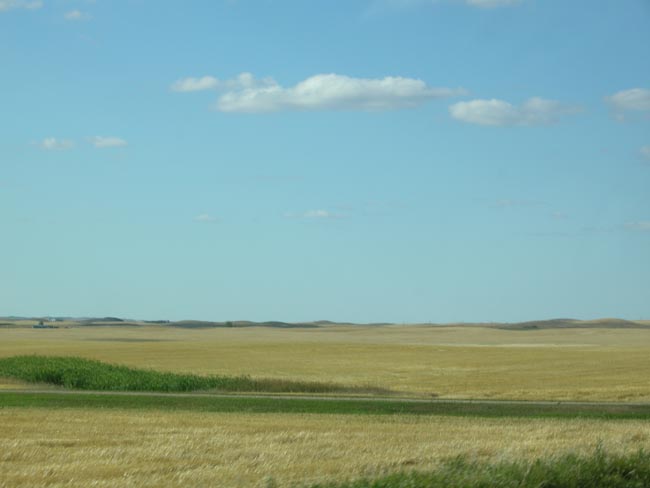 |
| In Edmonton we visited the Muttart Conservatory -- four glass pyramids, three holding representative plants of differing climate zones: Tropical, Temperate and Arid, with the fourth holding Featured exhibitions (Dahlias filled it during our visit). Karen, spoiled by Kew near London, rates it as "nothing overwhelming but I was impressed with what they could do given how far north they were." |
 |
| Karen continues: "The Royal Alberta Provincial Museum was overwhelming. I highly recommend it. Especially if you like dioramas. I was very impressed at how they had updated the display given the vintage these probably originally were." |
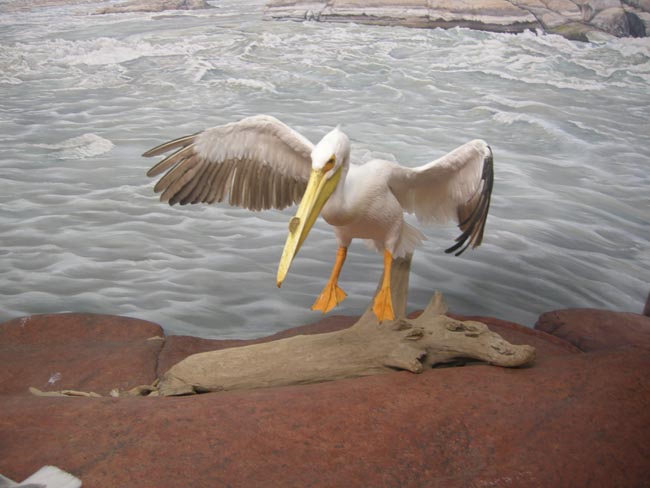 |
| Yes, they had the usual bugs on pins |
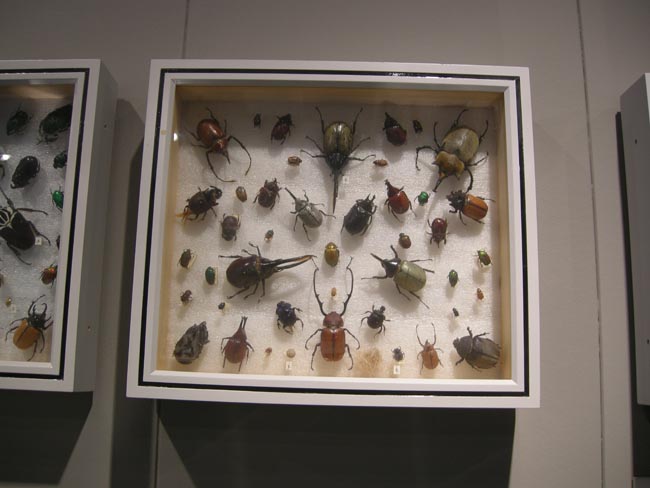 |
| But they also had facinating live ones at kid height and good explainations and graphics tying it all together. |
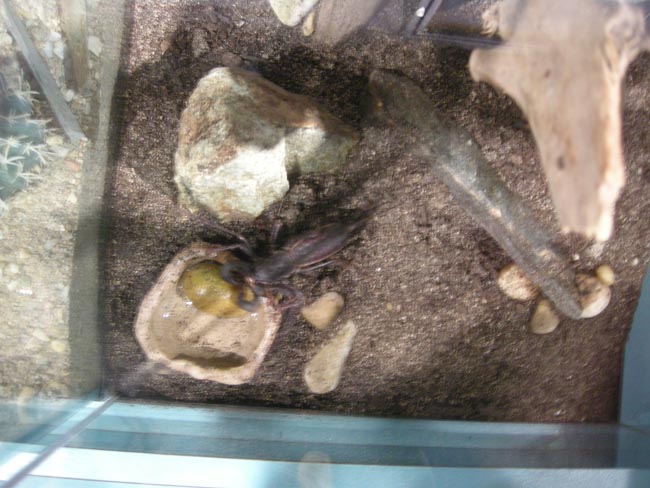 |
Horns
She was so enraptured with the rock and mineral display she forgot to take photos. |
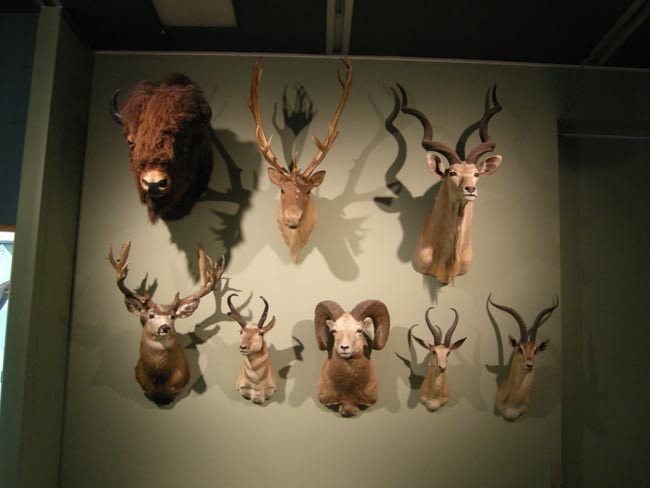 |
| And cultural pieces |
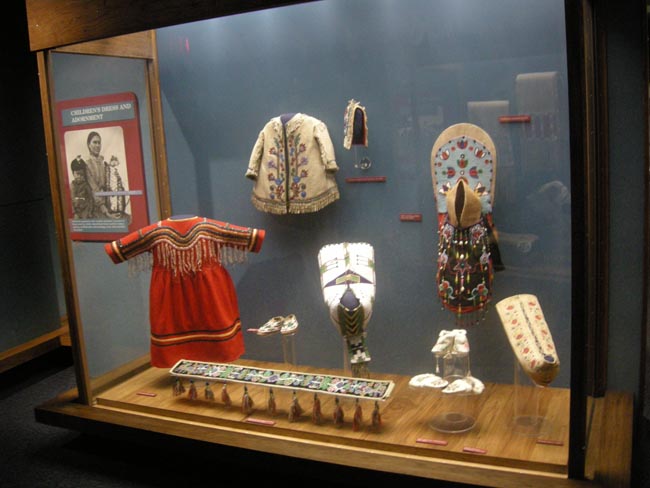 |
| And a vinage naturalist's room to give context to some of the lovely things that would otherwise have been gathering dust in the stacks for being out of fashion. |
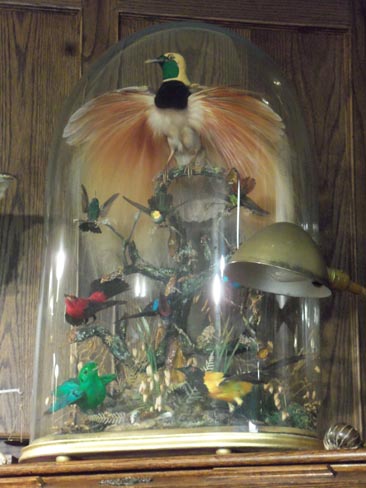 |
Then there was the fabled West Edmonton Mall.
Worth a visit if you collect strangeness: ice rink, roller coaster, swimming pool, aquarium, full scale model of the Santa Maria, etc. in addition to lots of shops.
Unfortunately, there were many empty storefronts. |
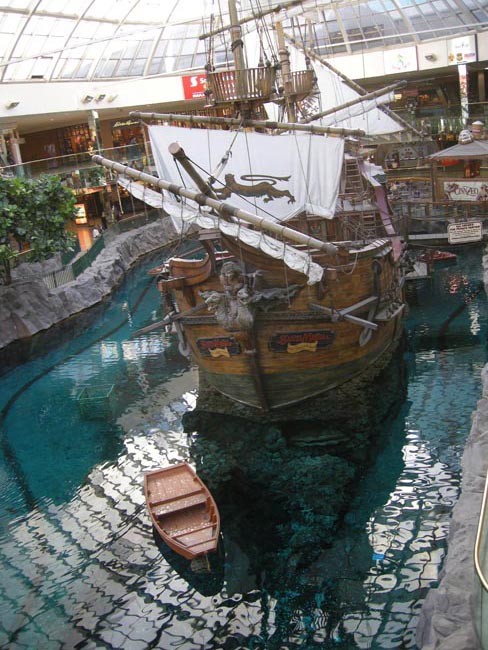 |
But fine dragons surrounding the windows of this one. We left the Mall at sunset, and sought a campground on the west edge of the city. It was only the 2nd commercial campground we stayed at the entire trip. Only after we woke up in the morning did we realize that the odd on-and-off "yard light" we'd noticed during the night was really a flare-off pipe on an adjacent oil pipeline. |
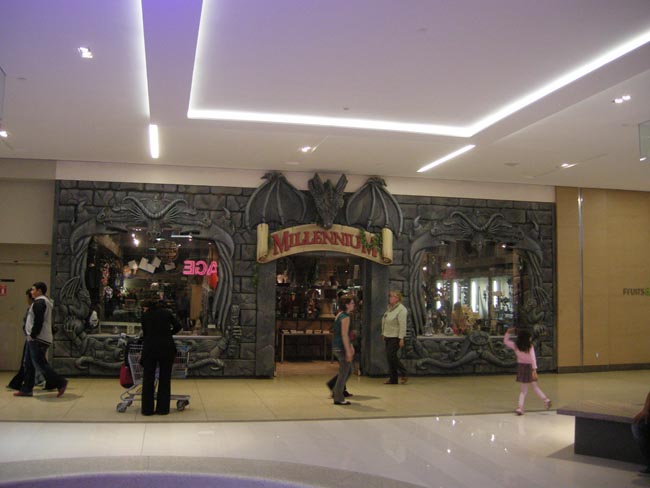 |
























































